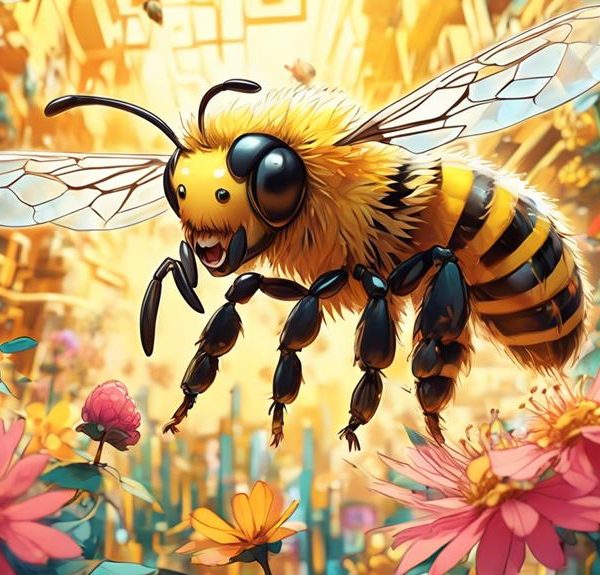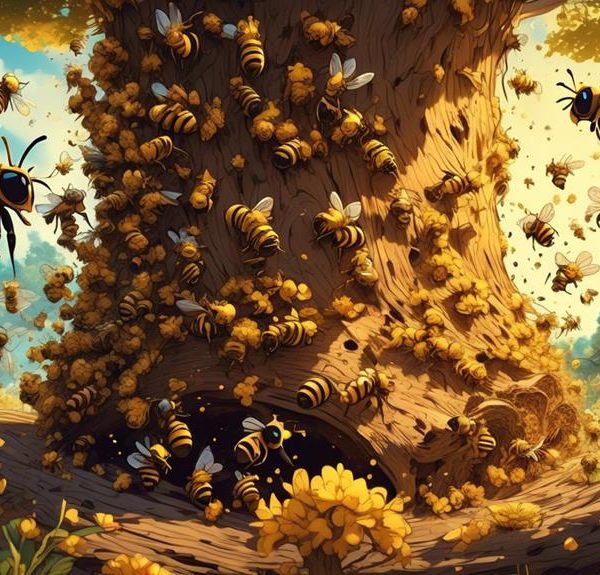Marvel at the intriguing differences between queen and worker bees, a fascinating dive into the complex hierarchy of a beehive.
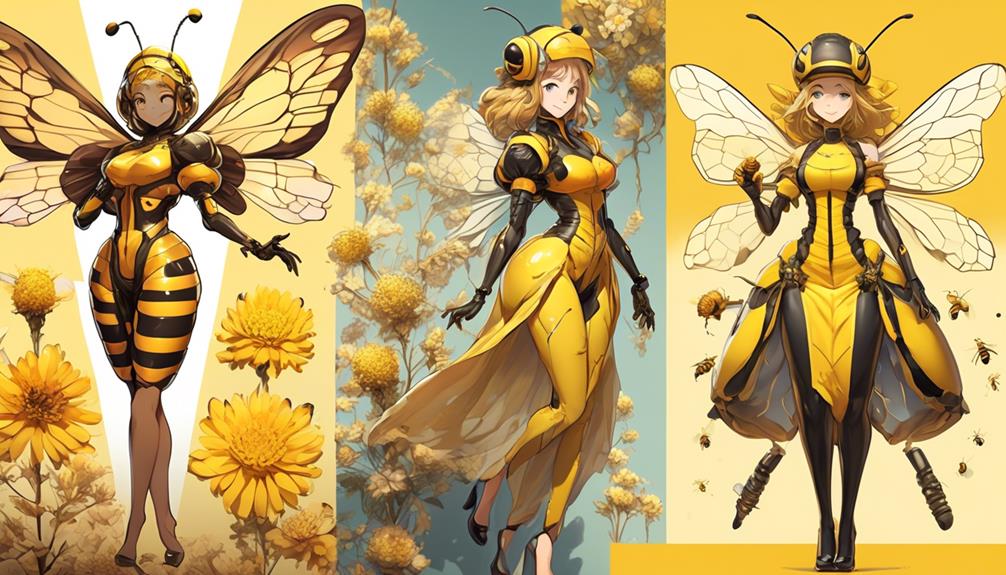
Difference Between Queen Bee and Worker Bee?
You've probably heard the old saying 'busy as a bee' and, while it's true that bees are hardworking creatures, not all bees are created equal.
In a beehive, each bee has a specific role to play, with the queen bee and worker bees playing very different parts in the hive's survival.
The queen bee, as her title suggests, is the ruler of the hive, her sole job being to lay the eggs that will spawn the hive's next generation of bees.
On the other hand, worker bees are the backbone of the hive, responsible for collecting nectar, making honey, and taking care of the queen and her brood.
The distinction is fascinating and there's much more to uncover about the intricacies of these roles, which could leave you buzzing with curiosity.
Key Takeaways
- The queen bee's primary role is reproduction, while worker bees have multiple vital duties.
- The queen bee is larger, lives longer, and can lay thousands of eggs per day, while worker bees are smaller, have a shorter lifespan, and have limited reproductive capacity.
- The queen bee's pheromones regulate hive activities and maintain social order, directly impacting the survival of the entire hive.
- The queen bee controls social order, suppresses workers' ability to lay eggs, ensures genetic diversity through mating with drones, decides the type of egg to lay, and executes the swarming process for the hive's survival and expansion.
Understanding Bee Social Structure

Diving into the world of bee social structure, you'll find a complex, hierarchical society dominated by the queen bee, with worker bees performing a myriad of tasks vital to the survival of the hive. The queen bee, the reproductive linchpin of the hive, is the mother of all bees within it. She's larger than the other bees and has a singular purpose: to lay eggs.
On the other hand, you've got the worker bees, all of whom are female, but unlike the queen, they're sterile. Their roles are multifaceted, ranging from foraging for food, caring for larvae, constructing and repairing the hive, to even defending it against intruders. They're the backbone of the hive, ensuring its smooth operation and survival.
Drone bees, the only males in the hive, have one purpose: to mate with the queen. They're larger than the workers but smaller than the queen. After mating, their role is fulfilled, and they die soon after.
In essence, bee social structure, though it might seem simple at first glance, is a well-oiled machine, each bee playing its part to ensure the hive's survival and continuity.
Queen Bee: The Colony's Heart
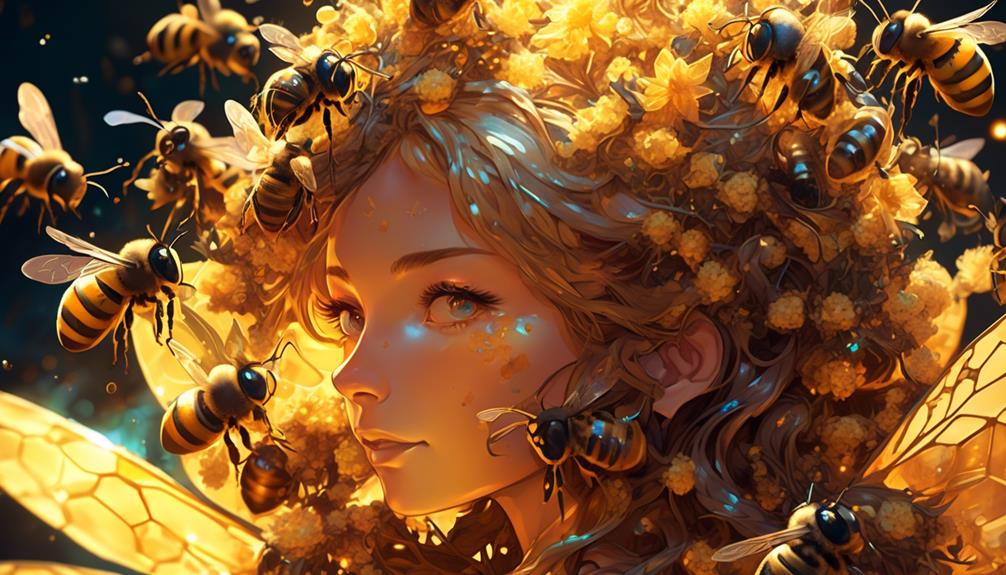
Often at the center of the hive, the queen bee reigns supreme, her every movement and pheromone dictating the rhythm of the colony's daily life. As the only reproductive female in the hive, she plays an essential role in the colony's survival, laying up to 1500 eggs per day. This massive reproductive capacity ensures the continual growth and replenishment of the colony's population.
The queen's pheromones serve multiple purposes. They regulate the hive's activities, suppress the reproductive capabilities of worker bees, and attract drones for mating. These chemical signals also help maintain social order among the colony, ensuring the workers' undivided loyalty to the queen.
You'll find, she's not born a queen. In fact, she's selected from worker bee larvae and fed a diet of royal jelly, a protein-rich secretion from worker bees. This special diet triggers her development into a sexually mature queen, a process that doesn't happen in regular worker bees.
The queen's longevity is another noteworthy point. Unlike worker bees who live for just a few weeks, she can live for several years. As the heart of the colony, the queen bee's wellbeing directly impacts the survival of the entire hive.
Roles and Responsibilities of Queen Bee
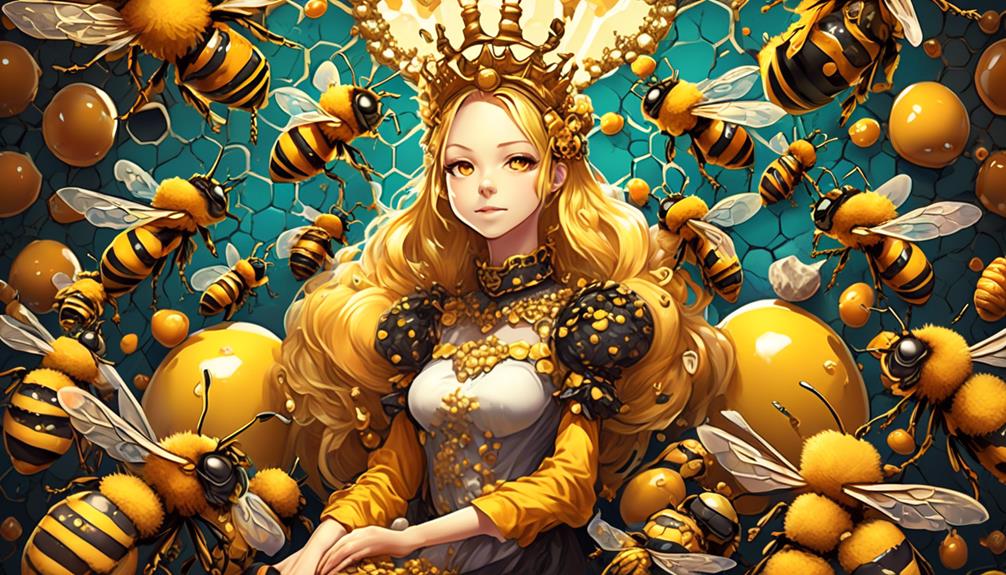
Building on her unique development and importance to the hive, let's explore the specific roles and responsibilities that the queen bee fulfills in her colony. The queen bee's primary role is reproduction. She's capable of laying up to 2,000 eggs per day! She also controls the social order of the hive through her pheromones, which maintain harmony and suppress the workers' ability to lay eggs.
Here's a table to visually outline her tasks:
Role | Activity | Importance |
|---|---|---|
Reproduction | Laying up to 2,000 eggs per day | Ensures the continuity of the hive |
Social Order | Releasing pheromones | Maintains harmony in the hive, suppresses workers' ability to lay eggs |
Mating | Mating with drones | Ensures genetic diversity |
Selection | Deciding the type of egg to lay (worker or drone) | Controls the population balance |
Survival | Executes the swarming process | Facilitates the hive's survival and expansion |
The queen bee's responsibilities are vital for the hive's survival and prosperity. Her ability to lay a vast number of eggs, control hive behavior, and ensure genetic diversity truly sets her apart. Understanding her role helps us appreciate the complex and fascinating world of bees.
Worker Bee: The Hive's Backbone
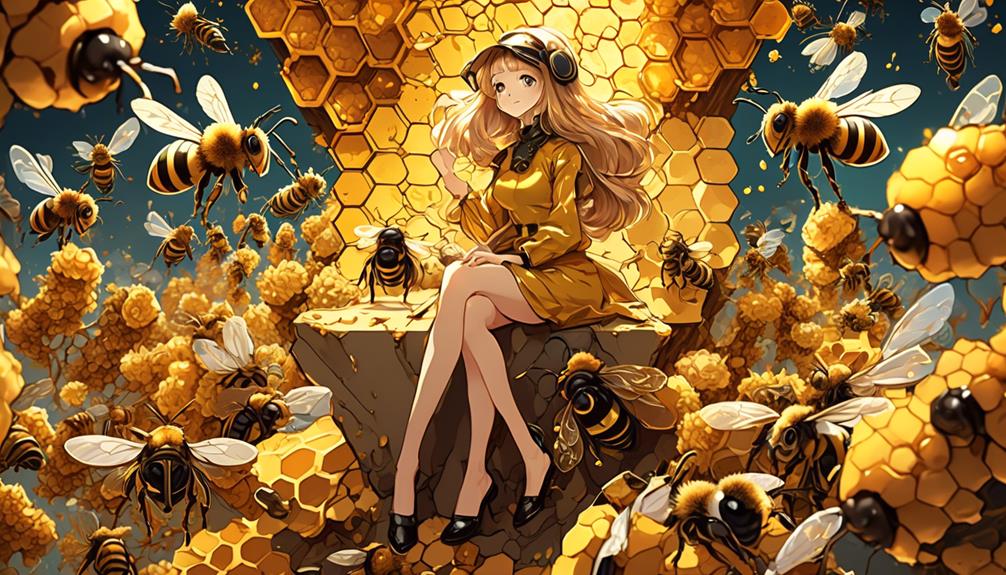
Now, let's turn our attention to the worker bees, the real backbone of the hive, whose tireless efforts keep the colony thriving and functioning efficiently. You'll find these bees to be the majority in the hive, often numbering in the tens of thousands. They're all females, yet unlike the queen, they're infertile. Their role is multi-faceted and essential to the hive's survival.
As a worker bee, you'd have a variety of responsibilities, all of which you'd fulfill meticulously. Your duties would evolve as you age. Your life would begin as a house bee, tasked with cleaning cells, feeding larvae, and tending to the queen. As you mature, you'd transition into being a guard bee, tasked with protecting the hive from intruders.
Duties and Functions of Worker Bees
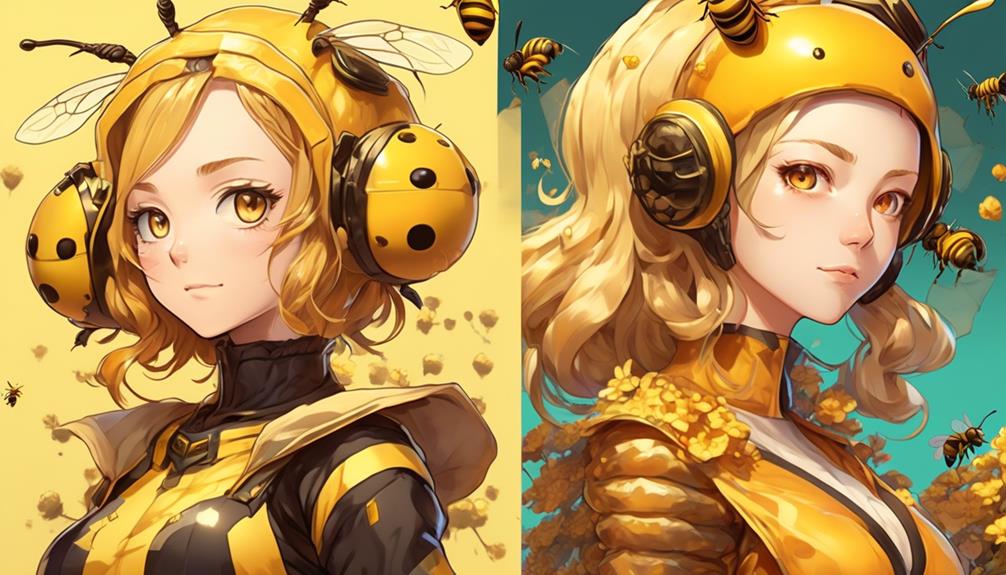
Delving into the specifics of their roles, worker bees carry out a plethora of duties crucial to the overall health and productivity of the hive. They're the backbone, you see, ensuring the hive's survival. Their tasks are divided by age, with younger workers tending to brood care and hive maintenance, while older ones forage for nectar, pollen, and water.
In the first phase of their life, workers act as nurse bees. They feed the larvae with a nutritious secretion known as royal jelly. They're also the hive's cleaners, removing waste and dead bees to prevent disease spread. As they age, they become builders, producing wax to construct and repair the honeycomb structure.
In the final phase, workers transform into foragers. They're the hive's scouts, venturing out in search of food. They collect nectar, pollen, water, and propolis – a resinous substance used for hive repair. They've an innate ability to communicate these locations to other workers through a 'waggle dance'.
In essence, worker bees are the hive's tireless laborers. They're the ones that keep the hive functioning, ensuring the queen can continue her sole duty of reproduction. Their roles are clearly defined, interconnected, and vital for hive's survival.
Comparative Analysis: Queen Bee Vs Worker Bee

Having explored the roles and responsibilities of worker bees, let's turn our attention to a detailed comparison between the queen bee and her industrious counterparts.
The queen bee, beholding the highest rank in the hive, is primarily responsible for reproduction. Her life is focused on laying up to 2,000 eggs each day, ensuring the continuation of the colony. Unlike the worker bee, she's larger and lives longer, typically up to five years.
Worker bees, on the other hand, are tasked with various duties vital for the hive's functionality and survival. They forage for food, produce honey, maintain the hive, and protect it from intruders. They're smaller in size and have a shorter lifespan of about six weeks. Unlike the queen, their reproductive capacities are limited, and they're unable to mate.
In terms of physical attributes, the queen bee is distinguishable by her elongated abdomen and shorter wings, while worker bees have a stinger and pollen baskets, which the queen lacks.
Thus, while they share a common purpose – the survival of the colony – the queen bee and worker bees differ greatly in their roles, lifespan, physical characteristics, and reproductive capacity.
Frequently Asked Questions
What Is the Lifespan of a Queen Bee Compared to a Worker Bee?
You're curious about the lifespan of queen bees versus worker bees.
A queen bee can live up to 5 years, though 2-3 years is more common.
In contrast, worker bees have significantly shorter lives, typically living around 6 weeks in the summer and several months in the winter.
How Does the Queen Bee Communicate With the Worker Bees?
You're wondering how a queen bee communicates with her worker bees.
Well, she uses pheromones, chemical signals that are vital to bee communication.
Essentially, these pheromones control the behavior and development of worker bees, maintaining harmony within the hive.
If she's healthy, her pheromones are strong, and the hive functions smoothly.
If she's not, her pheromones weaken, causing disorder and even leading to her replacement.
Can a Worker Bee Become a Queen Bee?
In bee colonies, you can't typically see a worker bee transform into a queen. Worker bees are fed royal jelly for a very limited time compared to future queen bees who are fed this potent substance throughout their development.
This diet directly affects their growth, enabling them to fully mature into a queen bee. So, a worker bee can't become a queen bee due to their distinct developmental processes.
Are There Any Physical Differences Between the Queen Bee and Worker Bees?
Yes, there are physical differences between a queen bee and worker bees.
Queen bees are larger, typically around 20mm long, while worker bees are smaller, about 12-15mm.
Queens have a longer abdomen, which is needed for laying eggs.
Worker bees, on the other hand, have pollen baskets on their hind legs for collecting pollen.
What Happens to the Hive if the Queen Bee Dies?
If the queen bee dies, it sends the hive into chaos. You'll notice worker bees scrambling to create a new queen. They'll choose a young larva and start feeding it royal jelly, a substance that helps it develop into a queen.
If they can't produce a queen in time, sadly, the hive will collapse. It's all about survival and maintaining the colony's continuity, you see.
Conclusion
In summary, you've learned that both queen and worker bees play vital roles in the hive.
The queen, as the mother of all bees, lays all the eggs.
Workers, however, do all the heavy lifting, from gathering food to maintaining the hive.
They're different, yet both indispensable for the colony's survival.
Understanding these roles enriches your knowledge of bees' complex social structure, highlighting their importance in our ecosystem.

